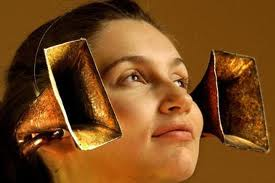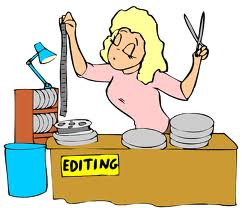
Paying Attention to Our Attention
Today I want you to think about one thing... you, and I would like you to focus on you. No, this is not an exercise in selfishness; it is one in attention, namely the discovery of where our attention lies. You may wonder why this is important, what it means to us and how considering it benefits us. I will look at these in this essay.
By attention, I mean where we focus our thoughts on. We all go about our lives doing things, thinking things and so on, and further, we all tend to notice certain “things” first. We key in on features of people, or pay attention to particular objects or shapes first. Where and why we place our attention is not something we are neither fully conscious of nor know why we do so. If one wants to become a better, more aware or even enlightened person this is a good place to start.
We know that the majority of our thoughts occur at the non-conscious or sub-conscious level. As we go about our day, we have experiences and many, many thoughts about them. Some of these we are conscious of, the majority we are not. How we react to these experiences depends on our history of reactions. Further, what we pay attention to during an experience is part of how we react to it.
For instance, when we enter a room our attention goes to what our Rational Mind (RM) has deemed most important. It could be the size of the room, the people in it, where the other exits are, where certain things may be in the room and so on. It varies from person to person and, of course, on the circumstances of our entering the room. Another example would be what we notice first about the people we meet.
Both of these examples illustrate that each of us pays attention to certain things first. The answer to the question of why certain things get our attention is the following: our previous reactions to experiences have trained our RM to react this way and what our attention is on is part of the reaction.

It is important to notice where our attention goes as we can learn a great deal about ourselves by noticing what catches it. In many cases, it is an assessment of the situation so that we can determine if there are any threats to us. We do not need to spend every moment trying to notice what it is that we notice. Where noticing what we are attentive to is of the greatest value to us is when we are interacting with people, including ourselves, or find ourselves in new situations for these have the greatest impact on us.
What is it that we notice first about others and what does this tell us about ourselves? The reality is that we train our RM to notice certain things about people for any number of reasons. We base our reaction to current experiences on our previous reactions. We look for certain features, or signs of some kind from people that they meet a certain criteria. Where our attention goes tells us a great deal about ourselves, including how we have programmed our RM. Would it not be nice to know the criteria our RM uses? Not the ones you are conscious of, rather the ones our RM considers when it is determining of what we will eventually be aware.
The idea that we are not typically conscious of our “true” reactions to experiences may seem odd, most figure that what they think about is their raw thoughts about the experience they are having. This is not the case. Our RM actually goes through a process to determine what thoughts we will have consciously.
Where our attention goes is part of this process and affects how we react and the thoughts we have about the experience. We can use an awareness of where our attention goes to help us change our reactions and thereby ourselves. One of the root determinants of where attention goes is a result of our minds assessing risk. Interest, curiosity, desire and so on also factor in.
For instance, the desire to explore can outweigh the risks to ones person. We all have our own set of priorities; again, they are the result of how we have programmed our RM. This set of priorities guides our RM on where we will focus our attention.
I will digress for a moment to touch on how our mind works. Figuratively, the RM is the sum of all our thoughts and the webs of thought constructs that bind them together. It includes our reasoning skills, beliefs, thoughts about things, ideas and constructs that represent our mental blocks and filters. Now, many of the constructs we have are essential else, we would suffer from information overload. For example, when we are picking up a glass, our mind amalgamates what it perceives into one unit, a glass. We do not consciously create the thought of a glass when we see it as we did when we learned about the concept of “a glass”.

Now, our RM will continue to process its experiences in the fashion it does unless we change it and we are unlikely to change what we do not notice. This is where noticing where our attention goes is very helpful.
Having an idea of the process can help us to learn how to notice what we may want to change about us. With that in mind, I will lay out this process a linear, sequential fashion. It does not actually occur this way, but our rational minds have a hard time seeing the holographic nature of our energy field (which includes our thoughts). The rate at which our RM goes through this process is almost instantaneously.
Imagine, if you will, that each thought (regardless of the type) is like a huge composite tuning fork and your mind is a field of these tuning forks. The entire energy field that is our RM perceives the experience simultaneously. The stimulus “interacts” with each tuning fork in the field. Any one of the composite tuning forks can change as a result, and it changes by addition not subtraction. Further, we often manifest or construct new composite tuning forks, or new thoughts.
Existing composite tuning forks take on more tuning forks, which changes the overall energy of the tuning fork, but the way it was is not lost as a result. Our reaction is can be viewed as the net change in the field, which includes our tuning forks that which is our RM. This reaction then is a new experience as well and the cycle repeated. Let us call this the Experience Reaction Sequence.
Experience Reaction Sequence
A stimulus (experience) occurs.
A stimulus can be external or it can be our own thoughts and feelings.
Initial reaction at the non-conscious level of the RM
- We interact with our perception of the stimulus
- We become aware of it when we have our initial reaction to it. The basis of the reaction is all our previous thoughts. If we already have a thought form for it, the experience will activate it, otherwise it will manifest a new thought or perhaps become stuck and unsure what to think about the experience (in which case we may have numerous thoughts about it but the RM cannot settle on one). Note that our reaction comes on multiple levels, including those of thoughts. Our initial reaction directs our attention to what is most important to us.
- We integrate our reaction to the experience. Most of our reaction is in the form of thoughts (and in turn emotions). Each thought being a stimulus, repeats this process until the integration is complete.
Borderline Conscious Level – Rational Mind Editor
- Our RM sorts through the thoughts it has about its reaction to the experience. The basis our RM uses to determine what is important to pay attention to is what it has learned from the past. The initial reaction is not all that it considers, for we integrate our initial reaction with all other thoughts we have. This is a process, and one that can go on for some time after our initial reaction. Also, note that the RM may decide to treat the integration of these thoughts as one “experience”. This tends to be the case for experiences where there is not a strong emotional component. Where this is not the case, the RM may go through the Loop below with each thought whether it is a new thought or a re-activated thought.
- Start of Decision Loop
- Our RM considers its thoughts about the experience (the first time it is the direct unedited version, which is the number one most honest answer or the unedited truth)
- The RM decides if we are to be consciously aware of the thought(s) about the experience. It decides based on how previous reactions have programmed it. The RM considers what we have come to prefer to avoid, what we can handle, like, do not like, want and so on.
- If NO to step #2, the RM comes up with a second thought about the experience. That is, the RM considers the previous thought and comes up with a different way to describe it that might be more palatable.
- If NO to step 2 return to step 1
- If YES go to End loop
- End of Loop
Conscious Awareness
Our attention is focused on a particular aspect of our experience and we have a thought(s) about it. . The though(s) is not the raw, initial reaction, it is a watered down version, one that we have deemed palatable or manageable. Also, we do have thoughts about other aspects of what we experience and whether they get our attention or not depends on the situation.
I wanted to share the above so that you were aware of some of the main details of the process. We will now look at it figuratively, for the mind works best when concepts are simple and straightforward. The above loop I described our minds going through is the RM Editor. I spoke about this in the “Improving Our Honesty” exercise on the website and will not do so in detail here. Essentially, the RM Editor is what we have programmed over the years. It remembers our previous reactions, as mentioned above, and decides whether we are “prepared” to handle the thoughts about the experience.

The number of times it might go through the loop depends on the experience. We edit the least in matters related to doing physical life things: walking, moving around, grasping things etc., though it still edits thoughts about these experiences.
You will note, from the sequence that our reaction focuses our attention. Further, since our reactions are what we are trying to understand you can see how noticing where our attention goes can benefit us. Only when we know what catches our attention we can start to ask about and explore why we do so. The value is not just in what how we can find issues to grow on; it gets us to think about our mental house. We are the sum of what we think, and our energy follows our attention. It seems appropriate then, to examine what we think and why.
Our attention is different for someone we know that someone we do not. Our mind can filter out things, with relative comfort, when we know the risks to some degree of certainty. This is why when trusts are broken they are so hard to repair. The mind gets back into the risk cycle though this time it finds it hard to reduce the risk to below ones threshold for concern because experience still will suggest the person can break the trust. When we interact with them, our RM will focus attention on whatever it feels it needs to in order to adequately access the risk.
So, what is most important to you about someone you meet? You will only know if you can figure out where you attention goes when you first perceive them. Is it their clothes, the look on their face, how they walk or carry themselves and so on. If you can determine this then you can start to understand why.
Say, you meet someone for the first time and you like him or her. Do you know why? Something about them caught your attention upon which you based your decision to like them. What was it? To get at this you may have to stop and ask yourself. When you do so, try to not preconceive the reason, instead let your mind wander almost aimlessly over the thoughts that come to mind as mentioned above. You may not be able to tell which was the most important so there is another way to help yourself, notice where your eyes go.

We know that when we are driving a car, the car goes to where we are looking. When you are taking a corner, you look where you want the car to go and you steer based on that. In life, where our attention goes steers us. Learning where we are steering ourselves helps a great deal for through it we can start to explore why we are steering ourselves the way we are.
Learning to note where our attention goes is an incremental process. It is challenging, at first, to notice where you attention goes. The mind will waffle about with the possibilities as mentioned above to determine the most palatable thoughts. Therefore, we have to peel away some of our editing process to even find out where we are putting out attention.
This is even more the case when our reaction is negative for such reactions tend to contain the highest risk. Such situations can have us caught in the lower emotions of our reaction or perhaps feel “out of sorts”. Neither of these is very conducive to helping us find where our attention is going. In this case, we are dealing with what people refer to as “our buttons”. In order to be clearer in the moment, more balanced in life and more aware in general, learning where our attention goes is of great help. Everyone wants to have less “buttons to push” to be in a sense invincible rather than vulnerable.
One can become "invincible" (in terms of button's being pushed) by being more transparent. A tree has leaves that catch the wind. In the summer, a strong wind can tear off leaves, branches and if the wind is strong, it can uproot the tree. In the winter, this does not happen because without leaves to catch the wind the wind passes through leaving the tree intact. Our buttons are the leaves on our tree. The more buttons we have the greater the chance that what happens to the tree can happen to us. The idea of removing buttons may appear like detachment, but detachment simply moves the tree and makes it susceptible to a different set of concerns. Our leaves must go and we do that by becoming more transparent.
Consider that....
When we base our opinion of us on what we believe others think of us, we add leaves
When we have needs that require filling, we add leaves
When we place value on what has no real value we add leaves
When we care with conditions, we add leaves....
When we feel guilty or blame others we add leaves....
When we compare ourselves to others we add leaves...
When we judge others or ourselves, we add leaves
When we are angry, jealous, full of pride, envy etc. we add leaves

It is hard not to add leaves, but if we learn to reduce the leaves we have, we also find that we are not only adding less, we are taking some away. Our attention is one of the keys to reducing the leaves on our tree. You cannot fix what you cannot see, you cannot see what you do not notice and it is very difficult to notice unless you pay attention to your attention.
© 2011 Allan Beveridge






